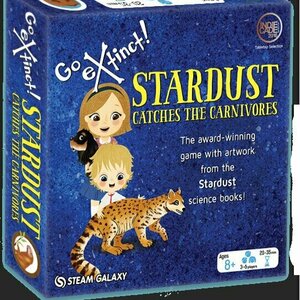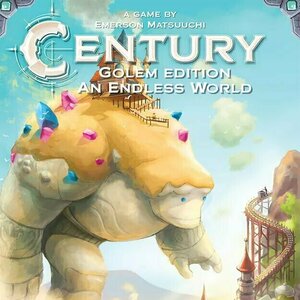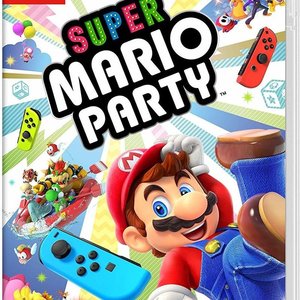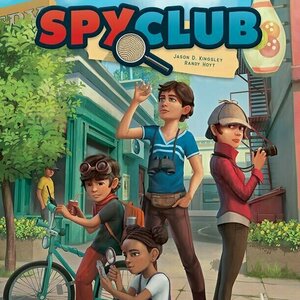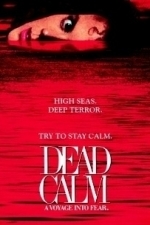
Dead Calm (1989)
Movie Watch
This edge of your seat thriller follows an Australian couple (Nicole Kidman, Sam Neill), whose yacht...
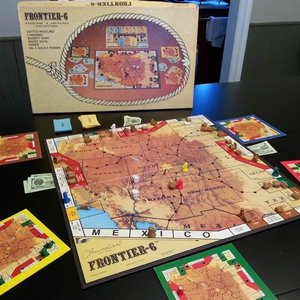
Frontier 6
Tabletop Game
You visit frontier towns as you go around the outer track, and you can buy up parts of them (bank,...
Boardgames BetterThanMonopoly WildWestGames
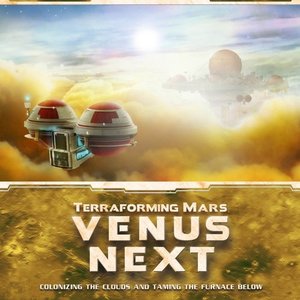
Terraforming Mars: Venus Next
Tabletop Game
Venus. a very deadly world. but it has potential! Up among the corrosive clouds, far away from the...
Purple Phoenix Games (2266 KP) rated Go Extinct!: Stardust Catches the Carnivores in Tabletop Games
Mar 26, 2020
In Go Extinct!: Stardust Catches the Carnivores (which I will shorten to Go Extinct from here on out) players are attempting to score the most points at the end of the game by collecting runs(?) of animals within the same biological family, called “clades.” More points are gained by collecting families with more members, and the game has a known end timeline – when the players’ cards run out.
DISCLAIMER: We were provided a prototype copy of this game for the purposes of this review. These are preview copy components, and I do not know for sure if the final components will be any different from these shown. Also, it is not my intention to detail every rule in the game, but to give a feel for how the game generally plays. You are invited to back the game through the Kickstarter campaign running until April 16, 2020, purchase from your FLGS upon release, or through any retailers stocking it after fulfillment. -T
To setup, place the large board on the table for all to see. Follow the setup rules per player count listed in the rule book (because it’s different for three players and for 4+). Shuffle the cards and deal each player six cards. The rest of the deck becomes the central draw deck. You are now ready to begin!
A game of Go Extinct is played over several rounds where players are trying to collect and play complete clades of animals. Only clades played to the players’ personal score piles can be scored at the end of the game, and once in the score pile, can no longer be stolen (asked for) by other players – just like in Go Fish.
Go Extinct becomes a bit more distinct when asking for cards. A player can ask a specific player for a specific animal (Wolverine, Polar Bear, etc) or can ask for cards within the same family (a cub of Delicate Dog or Ancestor of Ursidae). If a player is given a specific animal species, the asking player may take another turn to ask for more animals or clade members. If the ask is unsuccessful, the asked player announces, “Go Extinct” to indicate that the asking player must hunt for animals elsewhere, namely, the draw pile. Redraw at the end of a turn to a hand size of six and the game continues with the next player.
Again, the game ends once all the cards are played, but when the draw deck runs out, a new rule enters play. When asked for a clade, the asked player must give up to three of their cards, if they have that many of that clade. Once a player runs out of cards in their hand, they are finished, and the game ends when every player is out of cards. Tally up the points per clade size, and determine who is the best at collecting animal clades!
Components. Again, we were provided a prototype copy of this game, which is on Kickstarter now, so the components may be different from what will be produced via a successful KS campaign. That said, the components we received are great! The cards are good quality with excellent card art depicting extinct and current animals. The graphic layout is good, and once you can read the cards, the board is no longer really necessary for play. That board. It is absolutely beautiful, though not overly ornate, and is also completely unnecessary for play. We did enjoy having it on the table while we played, but players never actually interact with it or use for anything other than reference. It is a nice touch, though.
Being a family man, myself, and having young children, this will be great for when my kids learn to read. Learning the names of ancestral animals and scientific nomenclature of current animals is something I cannot wait to teach my kids. I really see no reason for me to ever teach them Go Fish while I have Go Extinct in my collection, and I do believe I will keep it there for a long time. If you enjoy light games with a heavy dose of education and direct player interaction without conflict, then Go Extinct is for you. It may be too light for hardcore gamers, but those gamers are not the intended audience. If you are looking for games to bond with your kids over, then you simply must check out Go Extinct. Or if you just want to learn a little something yourself, go ahead and pick up a copy or three. I recommend it. Visit the Kickstarter campaign here and tell them Purple Phoenix Games sent you!
Purple Phoenix Games (2266 KP) rated Century: Golem Edition - An Endless World in Tabletop Games
May 5, 2021
Disclaimer: This game comes with rules to incorporate any/all of the Century Golem games into one bigger game. In this review, I will only be discussing the stand-alone final game in the Century Golem trilogy. -L
Century: Golem Edition – An Endless World (referred to as just An Endless World for this review) is a game of set collection and worker placement in which players are trying to earn the most points by the end of the game. To setup the game, follow the instructions outlined in the rules, dependent upon your player count. Each player begins the game with 6 Trader meeples (or 7 in a 2-player game) in their supply, and a specified number/type of crystals. The game is now ready to begin!
On your turn, you will have 2 options: Work or Rest. To Work, you will first select a location square on the board. You may not choose a location where you already have Traders, or that has an Exploration tile. You will then place Traders from your supply onto the chosen location – the number of Traders required is printed on the location. If the location is unoccupied, simply place the required number of Traders. If the location is occupied by an opponent, you may place Traders there, but you must match the opponents Traders, plus an additional Trader, to take control of the location. Any opposing Traders ousted in this manner are returned to their players’ supply. Once you have placed Traders on a location, you can then perform the action listed on that location. Action options are: producing gems, upgrading gems, trading gems, or collecting Point cards/bonus tokens. If you cannot or do not want to use a location on your turn, you can Rest. To Rest, you will collect all of your Traders from the board and place them back into your supply.
Point cards can provide immediate, ongoing, or end-game benefits for players. Help cards allow you to place 1 fewer Trader than required on certain locations. Tool cards give players an additional gem of a specified color when they place Traders on corresponding locations. New Trader cards allow players to add either 1 or 2 more Traders to their supply, thus increasing their ability to play each ’round’ before needing to Rest. Finally, Exploration cards allow the player to select an Exploration token from the board. Any time an Exploration token is claimed, that location is now ‘uncovered’ and can be used for the remainder of the game. Bonus tokens grant end-game points based upon sets of icons collected, number of Traders in your supply, or simply straight-up points.
The game continues in this fashion, alternating turns, until a player has collected their 8th Point card. The current round is played out, and then points are counted. Points are earned through Point cards, bonus tiles, Exploration tiles, and any remaining gems in your supply. The player with the highest score wins!
One thing I really like about worker placement games is that the actual gameplay is pretty logical and straight-forward. Place your worker, perform action. And An Endless World is no exception to that. Of course, how you decide to play all comes down to your strategy, and again, An Endless World has tons of options for players. Maybe you want to just get 8 Point cards as quickly as possible and call it a day. Or perhaps you want to maximize your bonus tokens and eke out as many points from those as possible. Or maybe you even just want to keep your opponent(s) from achieving their goals. You can play this game so many different ways, and you can totally adapt and change strategy mid-game if you so choose. Each game feels unique and new, and I have yet to tire from this gameplay.
An Endless World is a worker placement game, but there is one factor that I find extremely unique for the mechanic. Usually, in worker placement games, once a worker has occupied a location, it remains there until the player chooses to recover their workers. An Endless World offers players the chance to oust opponents from locations, by placing the same number plus 1 additional worker. I just think this is super neat, because it means that you can’t just ‘block’ a location from everyone. If someone really wants that location, and they have the workers, they can get to that location. Also, along those lines, since ousting a player from a location means you have to match their workers plus an additional worker, you have to decide if you want to risk dedicating that many workers to a single location. You might reaaaaally want to perform that action, but for the cost of 4 Traders, is it worth it at this moment? Could those workers better be used on different locations and you just snatch your desired location on a future turn? All part of your strategy for the game, and definitely keeps all players engaged.
Let me touch on components for a minute. As with the other Century Golem games, An Endless World is extremely well-produced. The gems are the same quality, the cards are nice, thick, and clear to read, and the cardboard tokens are nice and sturdy. Plan B Games has hit the mark on this trilogy of games, and they truly are a pleasure to play. Obviously, the artwork and theme consistency throughout the Century Golem trilogy has been really satisfying, but that also carries over into the gameplay. All 3 games use much of the same iconography, so honestly learning An Endless World was super fast and easy for me. That uniformity is extremely user-friendly and is a huge plus for me.
So I guess you can see from my score and from reading this review that I am a huge fan of An Endless World. The final game of this trilogy is a home run for me, and I just keep thinking about what strategy I want to try in my next game. That in and of itself is an indication of a great game – thinking about it even when you’re not playing it! I have yet to try the variants that include the other 2 Century Golem games, and I am very much looking forward to integrating them all into one giant and (hopefully) awesome Century Golem saga. Purple Phoenix Games gives this one an expansive 16 / 18. Give it a shot, even if you haven’t played the other Century Golem games!
Zachary Wilson (3 KP) rated Super Mario Party in Video Games
Jul 29, 2019
Purple Phoenix Games (2266 KP) rated Spy Club in Tabletop Games
Aug 12, 2021
Spy Club is a cooperative memory and deduction card game utilizing an action point system and sharing of resources. It is set in any neighborhood where kids can gather in groups and snuff out a mystery. The goal is to whittle the clues down to the correct Motive, Suspect, Location, Crime, and Object of the Crime. Are you intrepid youths up to the task?
To setup, place the main board on the table, and the Escape Marker upon it at the bottom of the track. Shuffle the Movement Deck cards separately by backs, remove one from each differently-backed set, and place them in day – sunset – night order in its space. Each player receives a play board according to the number of players and a spyglass in their favorite color to go upon their play board. The Idea markers can be in a rough pile near everything else. The Clue Deck is to be shuffled and placed face-down (or face-up, whichever you prefer; they are double-sided) and each player is dealt a number of Clues equal to the number of spaces on their play boards. Clues will also be dealt to an “Incoming Clues” area (an offer row or “market”). DO NOT LOOK AT THE BACKS OF THE CARDS. Like, EVER. Unless you use an action to do so. The Suspecteeple will be placed on the right-most Clue Card of the starting player’s board. The game of sleuthing may now begin!
A player’s turn will consist of three main steps with different phases in those steps. Step 1 is Use Actions. Players will be able to use three Actions on their turn. These Actions are: Investigate, Shift Focus, Confirm, and Scout. To Investigate the active player will flip a Clue Card from their collection to its back. They may then continue flipping their cards or stop at any time. To Shift Focus a player will simply move their spyglass to a different Clue and collect Ideas equal to the number of Clues whose aspects match the newly-focused one (two Ideas if moving to a Location and a player has two Location Clues). Skipping Confirm, to Scout simply means purchasing a card from the Incoming Clues area to a player’s board, with a discard of an existing card already there.
Confirming is where the main action in Spy Club lies. Players will be attempting to Confirm five Clues of matching aspect (Location, Motive, etc) in order to hone in on the correct aspect. To Confirm, a player can submit a Clue from their collection (hand) to the main board. The cost, in Ideas, depends on where the spyglass lies. If the spyglass is directly under the Clue to be submitted the cost is nothing. However, if a player wishes to complete three Confirm actions and they have matching Clues on either side of their spyglass, they would need to spend two Ideas for each Clue resting one space away from the spyglass.
There are also rules for taking “Teamwork Bonus Actions,” but I will let you discover those on your own.
After these Actions are carried out, Step 2 is Refill. Firstly the active player’s hand will need to be refilled from the Incoming Clues row, and more Incoming Clues come out to fill that row.
Step 3 is Move the Suspect. Drawing from the Movement Deck the active player will match up the Movement cards from the previous round and the current round to find out how many spaces the Suspecteeple will be moving through players’ cards. Depending upon which aspect Clue the Suspecteeple lands a negative action will be levied against the players. In some ways the Suspect could land on cards that trigger no negative action, but I will leave that for you to discover as well. I am a bit… distracted.
Play continues in this fashion of players Using Actions, Refilling the Clue cards, and Moving the Suspect until players win by solving all five aspects of the crime, the Suspect escapes, the players run out of Idea markers, the Suspect escapes due to running out of Movement cards, or there are insufficient Incoming Clues to refill a player’s hand. So there are four ways to lose and one way to win.
Components. I find the components in Spy Club to be good overall. Nothing really stands out as amazing, either in design or quality. The art is very good, though. One thing I will say about the components as a whole is that once the game is setup and in play it looks fascinating on the table. I love the way it looks and certainly assists with full immersion. Always a plus in my book.
There are so many things I love about this game. And there are so many things I didn’t even explain here! Ok I’ll tell you one. Spy Club can be played as a one-shot game night medium-length (60 minutes) game, or can be converted into a campaign game where players will play five connected scenarios using a giant stack of cards that are not in use for the one-shots. That is simply fabulous! I can play one game of this to get people hooked, then reel them in by offering to continue this as a campaign to see what the main story arc is really trying to tell us. Oh man, that’s just special and I love it!
I feel like I have been playing a lot of really great games lately, and Spy Club is certainly a GREAT game. In fact, I told the rest of the team that this one is a contender for my Top 10 Games of All Time list. It has everything I love in a game: it is difficult (my first game I would have lost had it lasted one more turn) without being too heavy, it is inviting me to play more games (especially with the campaign mode active), I just like looking at it on the table, and creates a stunning amount of tension as we race against the game clock to figure out the crime aspects.
I have had this in my collection for too long without it being played, and I am so sorry that it took me so long to get into it. I will certainly be playing this a LOT more, and introducing as many people to it as I can. I think in the gaming world it is flying under the radar, but I will be one of its champions and suggest it as much as possible. If you like certain aspects (hehe) of Clue, 13 Dead End Drive, Carmen Sandiego, and even Jaipur, then take a look at Spy Club. Purple Phoenix Games gives this a super-sleuth 11 / 12. I actually might go play it right now. Yes, at 11:07pm.
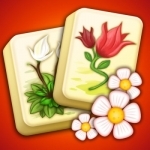
Mahjong Flower Garden
Games, Entertainment and Stickers
App
From the creators of the popular Venice Mystery puzzle, Mahjong Flower Garden is a wonderful classic...
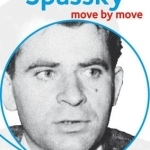
Spassky: Move by Move
Book
Boris Spassky is one of the greatest chess players in the history of the game. He was the World...
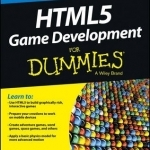
HTML5 Game Development For Dummies(R)
Book
Create games with graphics that pop for the web and mobile devices! HTML5 is the tool game...
